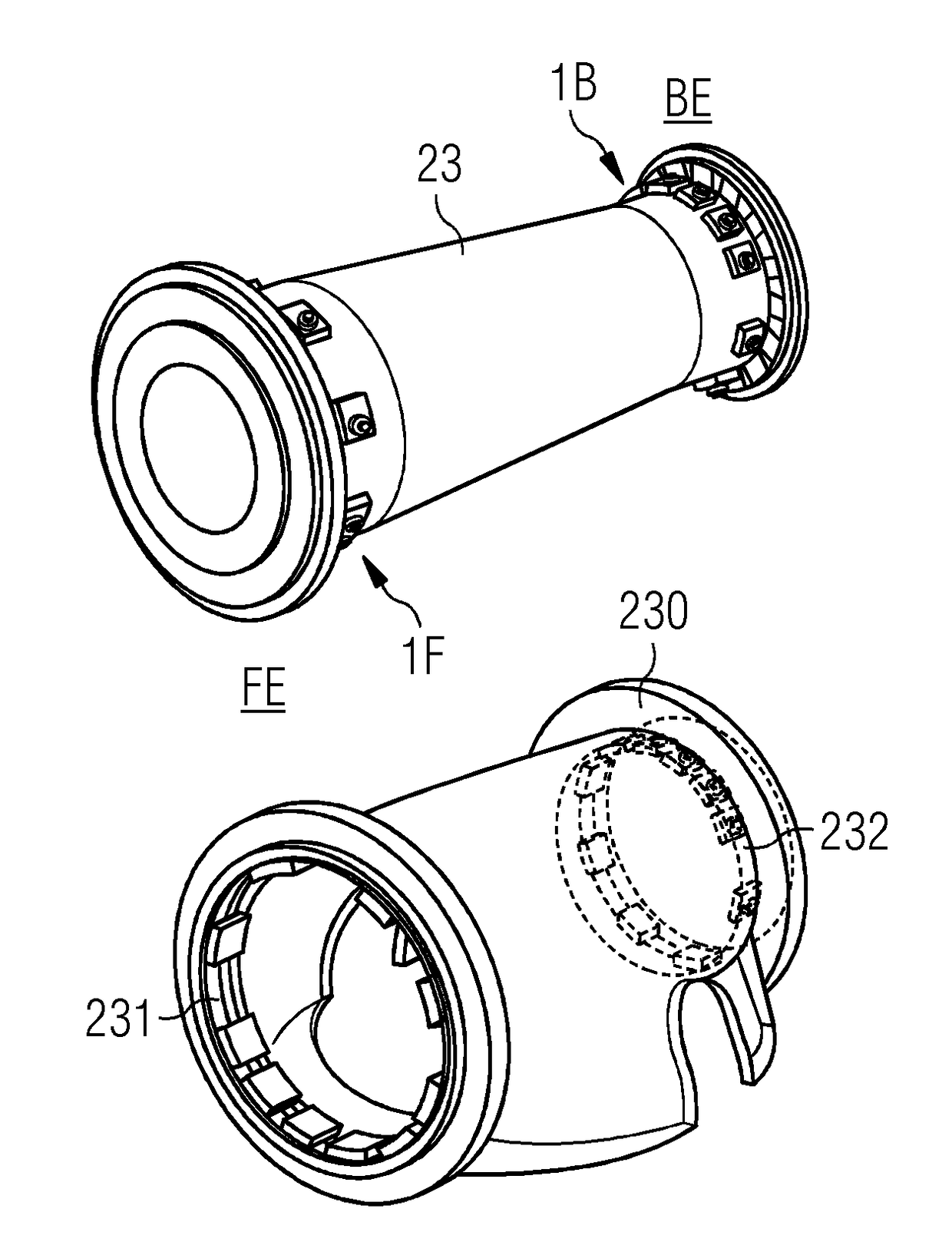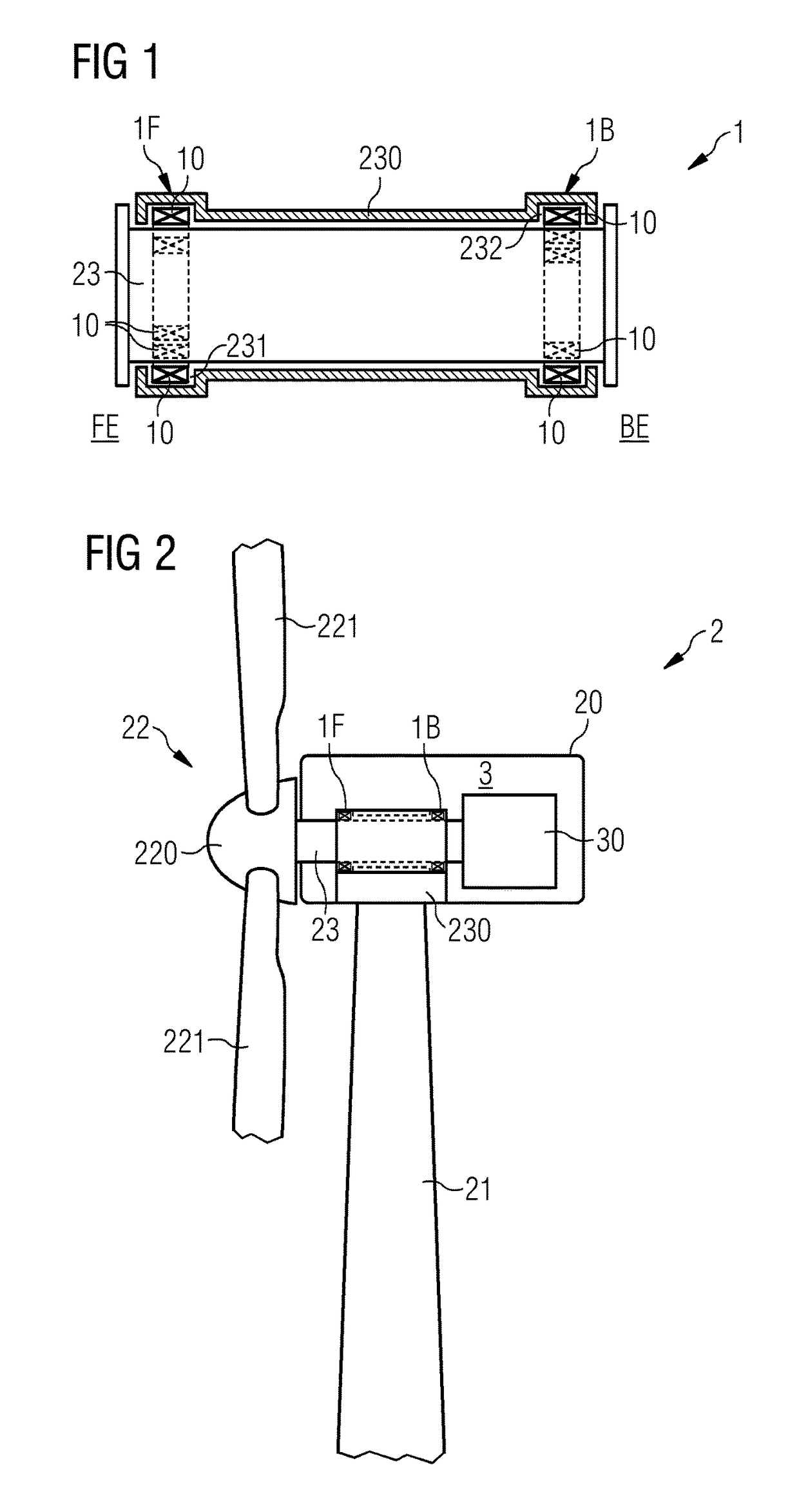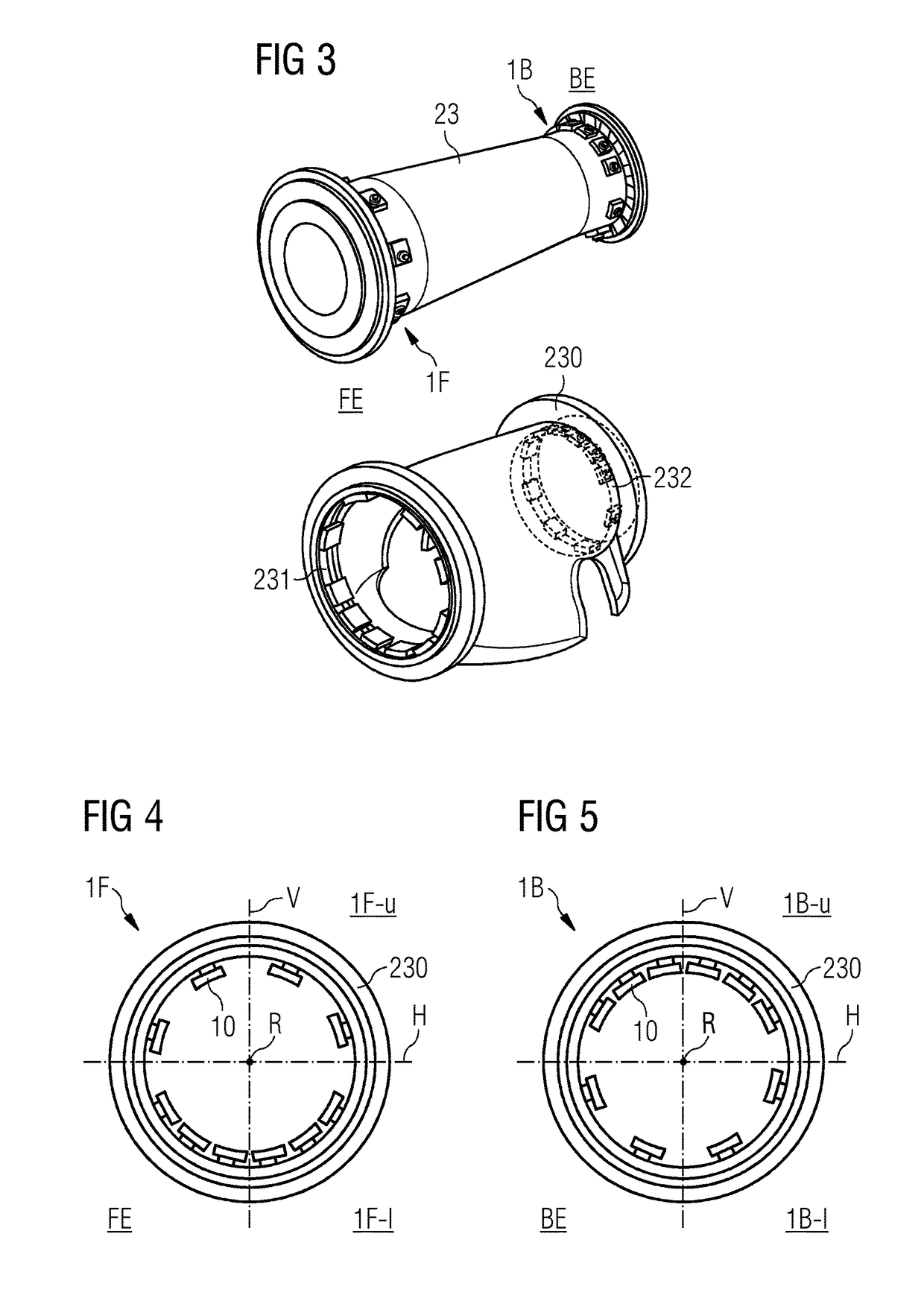Bearing arrangement
a bearing and arrangement technology, applied in the direction of bearing rigid support, sliding contact bearing, machine/engine, etc., can solve the problems of high degree of precision, damage to one or more bearings and the raceway, and the ball or roller of such bearings must be machined to a very high degree of precision
- Summary
- Abstract
- Description
- Claims
- Application Information
AI Technical Summary
Benefits of technology
Problems solved by technology
Method used
Image
Examples
Embodiment Construction
[0031]FIG. 1 shows a bearing arrangement 1 according to embodiments of the invention, used to support a drive shaft 23 in a drive shaft housing 230. The bearing arrangement 1 has a front-end bearing 1F in an annular space 231 at the front end FE of the drive shaft 23, and a back-end bearing 1B in an annular space 232 at the back end BE of the drive shaft 23. The diagram indicates an uneven distribution of bearing pads 10 at either end FE, BE.
[0032]FIG. 2 shows the bearing arrangement 1 of FIG. 1 installed to support a drive shaft 23 of a wind turbine generator 3. A wind turbine 2 comprises a nacelle 20 on top of a tower 21. A rotor 22 comprising a hub 220 and blades 221 mounted to the hub 22 will turn in response to an airflow over the blades 221. The rotor 22 is mounted to a drive shaft 23 to transfer the rotation to a generator rotor 30 (indicated in a simplified manner in the diagram) of the generator 3. The drive shaft 23 is held in place by a housing 230, and annular bearings 1...
PUM
 Login to View More
Login to View More Abstract
Description
Claims
Application Information
 Login to View More
Login to View More - R&D
- Intellectual Property
- Life Sciences
- Materials
- Tech Scout
- Unparalleled Data Quality
- Higher Quality Content
- 60% Fewer Hallucinations
Browse by: Latest US Patents, China's latest patents, Technical Efficacy Thesaurus, Application Domain, Technology Topic, Popular Technical Reports.
© 2025 PatSnap. All rights reserved.Legal|Privacy policy|Modern Slavery Act Transparency Statement|Sitemap|About US| Contact US: help@patsnap.com



